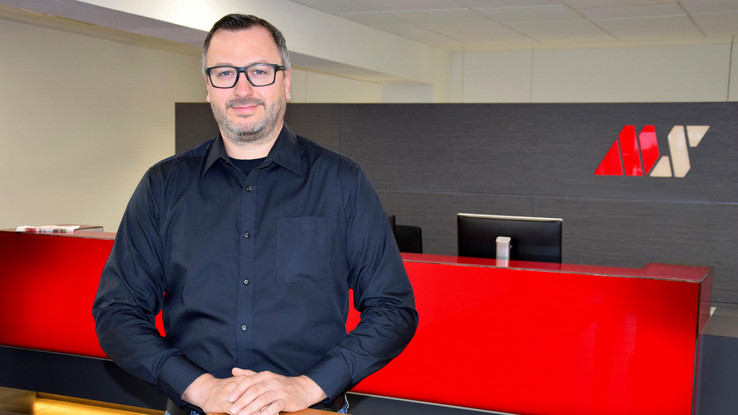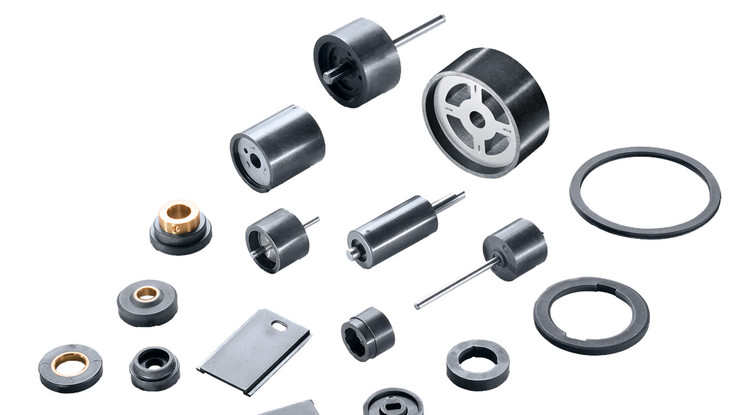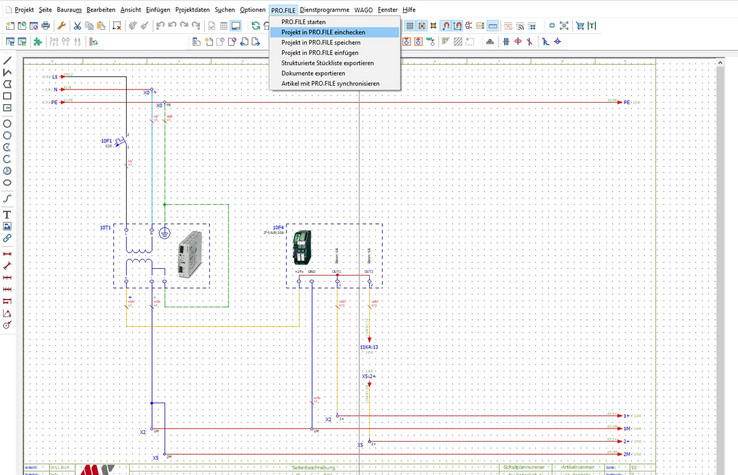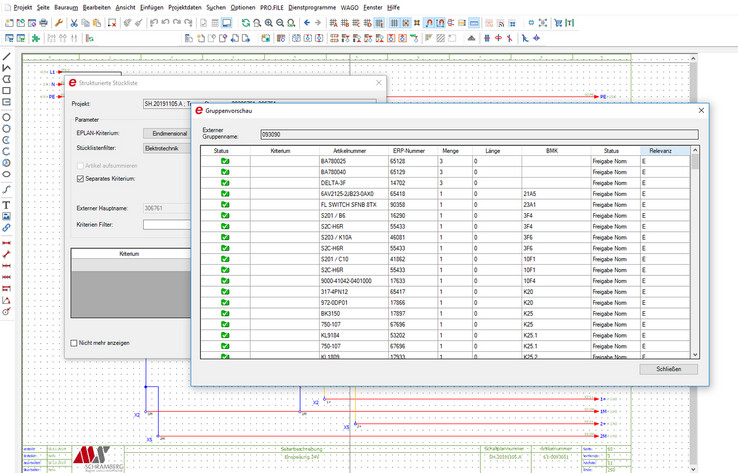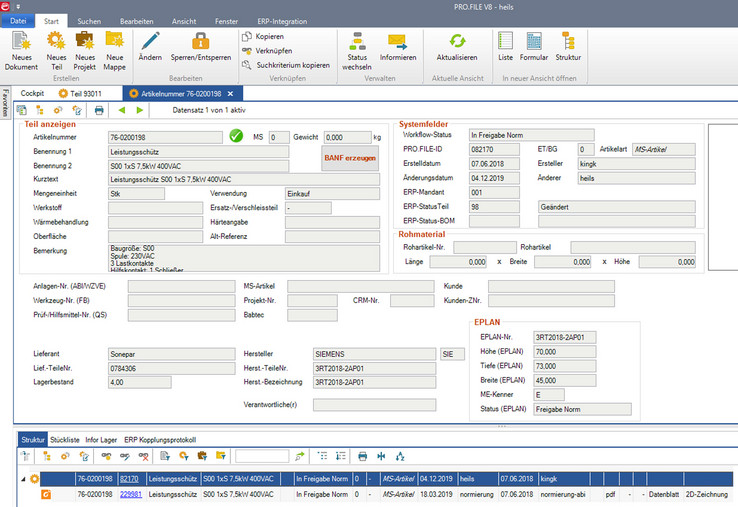Data flows in control cabinet engineering: Preferably integrated
MS-Schramberg links ECAD and PDM
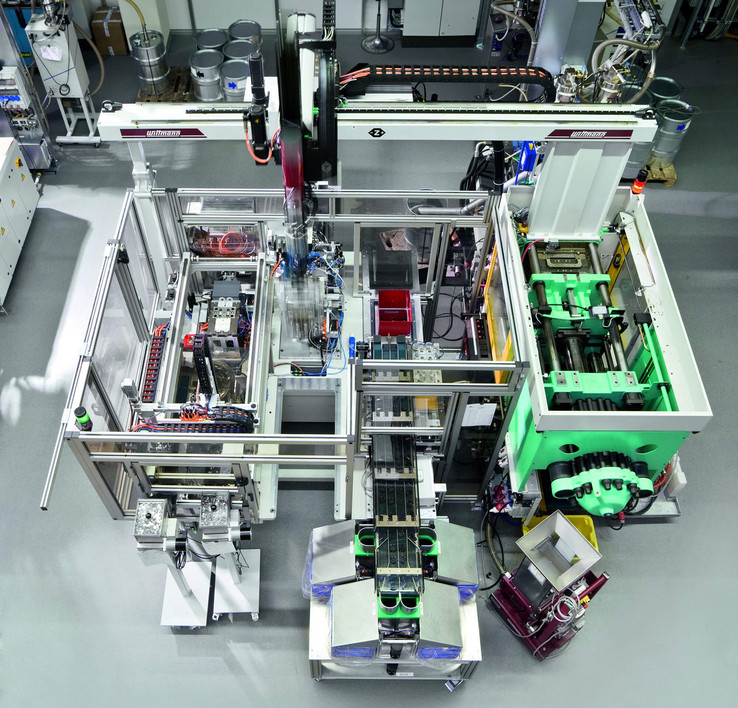
The company MS-Schramberg GmbH & Co. KG has simplified and accelerated the planning and production of control cabinets for its own machines. By integrating ECAD and the Pro.File PDM system, a detailed data platform is now available.
Coercivity, remanence and saturation polarization are parameters which developers at MS-Schramberg GmbH & Co. KG work with every day. The company is one of the leading manufacturers of customised magnet products. More than 5,000 different magnet components, always made for specific customer requirements, are manufactured in Schramberg. These include magnet assemblies to detect automatic transmission speeds and gearshift positions in vehicles.
The automotive industry is MS-Schramberg's most important sector but the company also supplies magnet and system solutions to medical technology, mechanical engineering and manufacturers of rail vehicles. MS-Schramberg’s products generate magnetic signals under often adverse conditions (in oil, at low and high temperatures, and in corrosive environments ...).
Major need for in-house automation
Vital to MS-Schramberg's success is their ability to supply customers with complete assemblies rather than "just" the magnets. Almost every one of the 5,000 products to be manufactured requires its own tools, moulds and automation systems. In-house plant engineering and especially automation technology is therefore of major importance.
In-house control cabinet engineering
Heiko Schaumann, IT administrator CAD systems at MS-Schramberg: "Our mechanical and electrical engineers also plan production systems in parallel to the products for customers. We use a high level of vertical integration, on the one hand because we have the expertise to do so but also because we are often under time pressure and need to make last-minute changes to products. We therefore design and build control cabinets in-house".
One of the MS-Schramberg principles is to always use the latest IT tools. Electrical planners have therefore been working with EPLAN for more than ten years. Heiko Schaumann: "Since each installation is designed and built for a specific product, we almost always work on a batch size one basis. However, designers use standard models for functions and modules that recur, e.g. removing parts in injection moulding machines and transporting parts in assembly".
The target: To link ECAD, PDM and ERP
MS-Schramberg has also been well equipped with product data management systems over the years and uses Pro.File from PROCAD. Heiko Schaumann: "This PDM system is proving its worth especially for documentation and data maintenance as well as for change management". Because the "IT people" at MS-Schramberg are ambitious, their goal early on was to connect EPLAN – as well as the Solidwork MCAD system – to PDM and then ultimately to the ERP system. Heiko Schaumann: "Our goal has been a mechatronic bill of materials: continuous data sharing between planning and commercial functions".
MS-Schramberg had already tested a specially developed solution, but it turned out to be unconvincing. In autumn 2018, the EPLAN Pro.File connector came to the notice of Heiko Schaumann as a new interface developed by EPLAN for connecting the Pro.File PDM system.
Integrated data at every level
MS-Schramberg now uses the EPLAN Pro.File connector to get data – especially bills of materials – from EPLAN. The connection is used to transfer the data to the ERP system. Heiko Schaumann: "The EPLAN data is important, for example, as a basis for resource lists which we need for inventory, purchasing, disposition and production planning. These lists previously had to be entered manually. This was time-consuming, error-prone and ultimately redundant. And it became difficult when changes were still being made during the planning process, something that happens with increasing frequency. We now have consistent data at every level, also for such cases: Any design changes can be found in the resource lists".
Electrical planning now ends with a production order which is then transferred to the ERP system via integration and Pro.File for further processing. By using Rittal control cabinets, MS-Schramberg gains added benefits. These cabinets can easily be designed with EPLAN, including cable routing and climate control. Engineers can now upload data from the EPLAN Data Portal for components to be purchased.
Professional design and quick implementation
Heiko Schaumann: "The experience gained from the previous project with the unconvincing interface also helped quick implementation.” We knew what we needed and how such a project should be implemented". Simon Heil, Key User EPLAN at MS-Schramberg, had carried out data maintenance and adaptation beforehand: "We were able to automate most of the tasks here using a program provided by EPLAN, with only minor manual adjustments having to be made". Legacy data is now undergoing gradual updating so that it can be used by MS-Schramberg everywhere.
A small additional need for action was also identified and addressed at an early stage. Simon Heil: "We had entered our own parts identifiers in an EPLAN field that requires EPLAN’s own article number for the connector and is therefore vital for ECAD and PDM communications. But we were able to correct this in two days with the help of a routine quickly provided by EPLAN".
Summary: The right decision
The mechatronic bill of materials brings major benefits to electrical planning and control cabinet production. It saves costs, avoids duplication of work and transmission errors, and speeds up the design process. Implementation of the EPLAN Pro.File connector was unexpectedly easy. Heiko Schaumann refers to another benefit that will probably come into play in the future: "The integrated sharing of data can be used throughout the entire life cycle of the systems – even for maintenance or upgrades. This is important for us because the systems will stay in our company and high availability is a priority – without any additional cost and effort whenever possible".
The next step in electrical design is to have even greater standardisation and modularisation in control cabinet engineering. Heiko Schaumann: "We've already started a project to achieve this".



